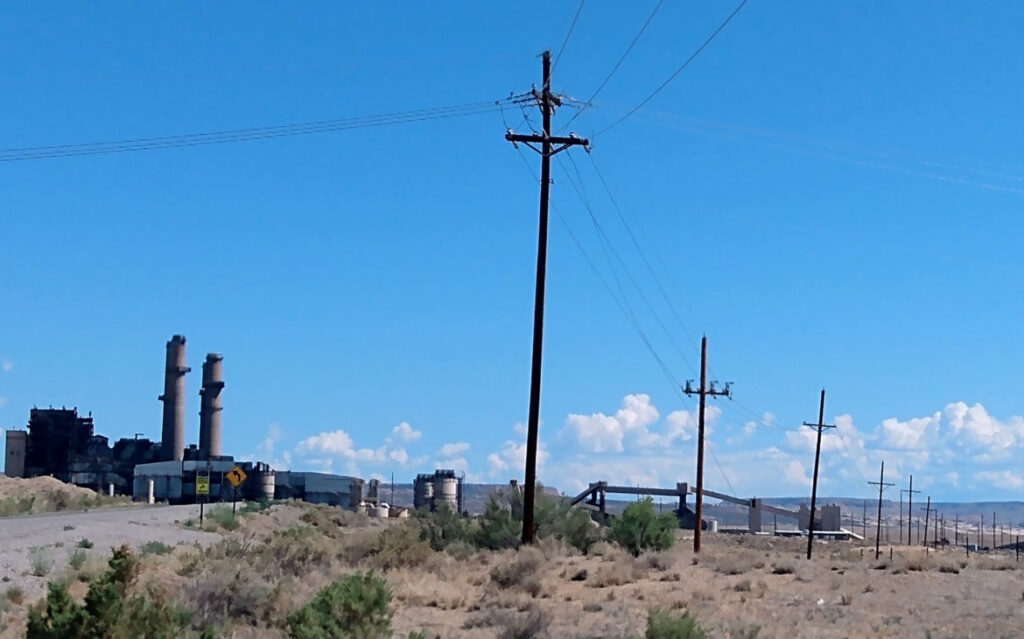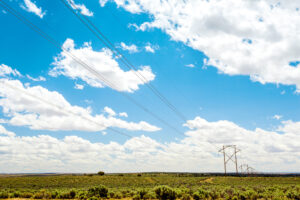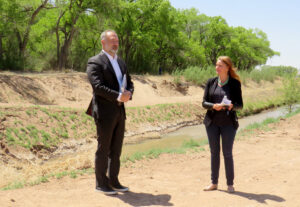San Juan is one of five phase three CarbonSAFE projects, but questions of viability remain

The United States will need to inject about a billion metric tons of carbon dioxide annually into underground reservoirs by 2050 to meet the zero emissions goals, according to Darin Damiani, carbon storage program manager for the U.S. Department of Energy’s Office of Fossil Fuels and Carbon Management. He said currently there are five CarbonSAFE projects in phase three with the ability to sequester 250 million metric tons.
Damiani spoke during a webinar presentation on Tuesday about the proposed sequestration of carbon dioxide captured from the San Juan Generating Station.
The CarbonSAFE program is a federal initiative that provides funding for carbon geological storage projects. The program is broken down into four phases. The San Juan project is currently in phase three, which involves obtaining a permit from the U.S. Environmental Protection Agency to construct what is known as Class VI wells. It also includes seeking National Environmental Policy Act approvals and a carbon assessment. There are a total of five projects in phase three. Phase four involves drilling the wells, developing a risk assessment and mitigation plan and continued monitoring of the sites. There are not any projects listed currently in phase four.
New Mexico Institute of Mining and Technology Petroleum Recovery Research Center Director Robert Balch presented carbon sequestration as an opportunity for the state to stand out. He said New Mexico often ranks last, but carbon sequestration is one area that the state can lead the world.
The central premise of the San Juan project is that the coal-fired San Juan Generating Station can be retrofitted with carbon capture technology to provide clean, reliable power that will help during the transition to renewable energy. A company named Enchant Energy is leading the charge in partnership with the City of Farmington. Enchant Energy hopes to acquire a 95 percent ownership interest in the plant once owners like Public Service Company of New Mexico exit the partnership.
If successful, the San Juan project will lead to the capture and potential sequestration of 67 million metric tons of carbon dioxide annually for 20 years.
This proposal has been met with cynicism and opposition from people who say it is expensive and relies on technology that has a poor track record. Only two utility-scale coal-fired power plants have been converted and, critics say, neither has met the carbon capture goals. The largest of these two, the Petra Nova project in Texas, operated for about three years before being shut down due to economics. The other one, Boundary Dam in Canada, has struggled to meet its goals. In 2021, Boundary Dam captured 43 percent less carbon dioxide than in 2020.
Critics say the money—current estimates are $1.4 billion for the San Juan project—could better be spent on building out renewable energy infrastructure.
Proponents say carbon sequestration is important not only for projects like the San Juan Generating Station, but also for potential hydrogen projects that use methane and for direct air capture. The federal Infrastructure Investment and Jobs Act included billions of dollars for various technologies associated with the sequestration of carbon dioxide, including hydrogen hubs. Damiani specifically highlighted $2.5 billion for carbon storage field test and validation projects such as the ongoing exploration related to the San Juan project.
There are different types of injection wells. A class II well is more common than the proposed class VI wells. Class II are fluid injection wells, often used for produced water, and have been linked to increased seismic activity and earthquakes in the Permian Basin. But Balch said class VI wells used for carbon sequestration will likely not have the same impact on seismic activity due to the nature of carbon dioxide compared to produced water.
Balch said modeling shows that the volume of liquid that goes into a carbon dioxide storage well is about a tenth of what would be injected into a Class II well.
“Also CO2 is compressible, whereas water is not,” he said.
He said produced water increases pressure in the formation while carbon dioxide can actually compress and relieve some pressure.
He said there has been seismic monitoring in the San Juan area and the wells, once drilled, will be monitored for any impacts on seismic activity.
The plan is to drill about ten carbon injection wells near the San Juan Generating Station. The carbon dioxide captured from the combustion of coal will then be injected into a geological formation known as the Entrada formation.
Cindy Crane, CEO of Enchant Energy, said the San Juan project will also have the option of selling carbon dioxide for enhanced oil recovery. An existing pipeline near the San Juan Generating Station takes carbon dioxide from McElmo Dome in the Cortez, Colorado, area to the Permian Basin.
As for the San Juan project, permitting is underway for pipelines and injection wells. Enchant Energy continues to negotiate with the current owners of the San Juan Generating Station for the transfer of the facility. Crane said a final Front End Engineering and Design study, which will provide updated cost estimates, will be released this year.
This article was originally posted on San Juan is one of five phase three CarbonSAFE projects, but questions of viability remain







